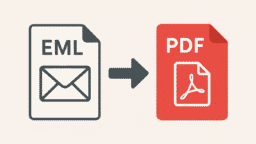According to the TIOBE Index and Stack Overflow Developer Survey, Java, Python, and JavaScript remain in the top three most widely used languages worldwide, collectively powering over 70% of enterprise applications.
Python has seen a 40% increase in enterprise adoption in the last three years due to AI and machine learning demand, while Go usage in enterprise cloud projects has grown by 30% year-over-year.
Rust is among the fastest-growing languages, cited by 87% of developers as a “most loved” language for its security benefits.
Meanwhile, Java maintains dominance in banking and telecom, with over 90% of Fortune 500 companies still running Java-based systems in production.
Why Programming Language Choice Matters in Enterprise Software

Choosing the right programming language is not just about syntax; it’s about aligning technology with business goals, industry regulations, and long-term scalability.
In 2026, enterprises prioritize languages that support microservices, cloud platforms, and AI-driven workflows. The right choice impacts everything from time-to-market to security compliance and maintenance costs. For deeper guidance, see this blog on custom web app architecture.
1. Java – The Enterprise Standard
Java continues to be the backbone of enterprise systems thanks to its reliability, security, and massive ecosystem. In 2026, it powers mission-critical applications in banking, telecom, and healthcare, supported by frameworks like Spring Boot and Jakarta EE.
Its JVM-based architecture ensures portability across platforms, making it ideal for global enterprises running diverse systems.
2. Python – The Language of AI and Automation
Python dominates in AI, machine learning, and enterprise automation. Its rich libraries like TensorFlow, PyTorch, and Pandas enable businesses to embed intelligence into software with ease.
Beyond AI, Python powers ERP solutions, data analytics, and cloud applications, making it a favorite for enterprises looking to leverage data-driven decision-making.
3. JavaScript & TypeScript – The Web Application Leaders
JavaScript remains essential for enterprise-grade web applications, while TypeScript adds type safety and scalability for complex projects. In 2026, enterprises will use them for front-end frameworks like React, Angular, and Vue, as well as back-end solutions powered by Node.js.
With demand for interactive dashboards and SaaS platforms, these languages continue to shape enterprise digital experiences.

4. C# – Microsoft’s Enterprise Powerhouse
C# thrives in ecosystems where enterprises rely heavily on Microsoft technologies such as Azure, .NET, and Windows-based applications.
In 2026, it powers enterprise CRMs, ERPs, and SaaS platforms with strong support for cloud-native development. Its balance of performance and security ensures it remains a top choice for regulated industries.
5. Go (Golang) – The Cloud-Native Favorite
Go has grown in popularity for its lightweight concurrency model and performance in distributed systems. In 2026, it will be widely used for microservices, DevOps tools, and containerized applications on Kubernetes.
Enterprises value Go for its ability to handle high-performance workloads while maintaining code simplicity, making it a natural fit for global-scale software.
6. Rust – The Security-Centric Language
Rust has become a preferred language for enterprises prioritizing memory safety and security. Its performance rivals C and C++, but without common vulnerabilities like buffer overflows.
In 2026, industries such as fintech, defense, and IoT are increasingly adopting Rust for secure systems. Its growing community and corporate backing suggest a strong long-term presence in enterprise ecosystems.
7. Kotlin – Modern Java Alternative
Kotlin’s interoperability with Java has made it a mainstream choice for Android apps, but in 2026, it also powers enterprise back-end systems and SaaS applications.
Its concise syntax and modern features help enterprises reduce code complexity while still leveraging existing Java infrastructure. Kotlin is increasingly part of cross-platform strategies where mobile, web, and cloud integrations are required.

8. PHP – Still Relevant for Enterprise Web Systems
Despite being older, PHP remains vital in enterprise content management systems, e-commerce platforms, and legacy applications. In 2026, frameworks like Laravel and Symfony provide rapid development cycles and continue to support major enterprise ecosystems worldwide.
Its wide developer base ensures ongoing maintenance and scalability for businesses running web-heavy systems.
9. Swift – Enterprise-Grade for Apple Ecosystem
Enterprises focused on mobile solutions for iOS and macOS rely on Swift. In 2026, it supports enterprise-grade healthcare apps, banking apps, and internal tools where security and performance are critical.
Swift’s strong integration with Apple’s frameworks ensures it stays a top choice for companies targeting premium user experiences.
10. SQL & Beyond – The Backbone of Data-Driven Enterprises
While not a programming language in the strictest sense, SQL remains indispensable for enterprise systems handling structured data.
In 2026, variations like T-SQL and PL/SQL continue to power banking, ERP, and supply chain systems. With enterprises relying on data-driven architectures, SQL remains the silent enabler behind decision-making systems.
How Enterprises Choose the Right Language in 2026

Enterprises rarely depend on just one language; they adopt polyglot architectures. For example:
- Java for core banking logic.
- Python for analytics and AI.
- Go for microservices at scale.
- JavaScript/TypeScript for customer-facing web portals.
The key is to align language ecosystems with long-term digital transformation goals. For practical insights, check this guide on enterprise application development.
FAQs

1. Which programming language is best for enterprise software in 2026?
It depends on needs: Java for stability, Python for AI, Go for cloud-native apps, and Rust for security.
2. Why is Java still used in enterprises?
Its stability, ecosystem, and JVM portability make it reliable for mission-critical systems.
3. Is Python suitable for enterprise-scale projects?
Yes. With frameworks and libraries, Python supports AI, ERP, and enterprise automation at scale.
4. Which new languages are gaining traction in 2026?
Rust and Go are growing rapidly due to security and cloud-native adoption.
5. Do enterprises use only one language?
No. Most adopt polyglot strategies where multiple languages serve different business functions.
Conclusion

The top programming languages for enterprise software in 2026 reflect a balance of legacy stability and future-ready innovation. Java and Python dominate core systems, while Go, Rust, and Kotlin power modern architectures. By adopting the right mix, enterprises can ensure scalability, security, and adaptability in an evolving digital-first economy.
Programming languages are not just tools; they are strategic assets that define how enterprises deliver value, secure operations, and compete globally.






